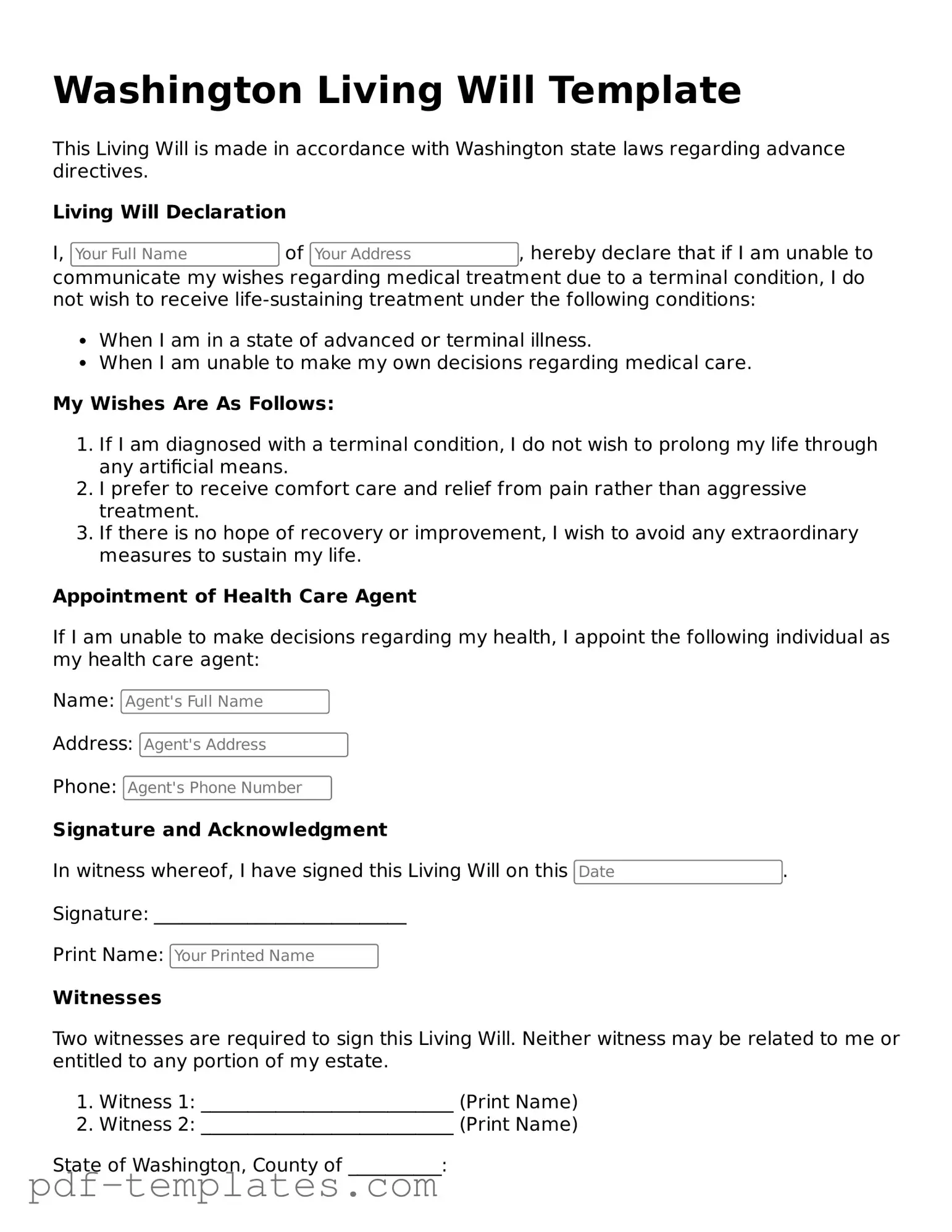The Washington Living Will form is similar to a Healthcare Power of Attorney. Both documents serve to express an individual's wishes regarding medical treatment in the event they become unable to communicate their preferences. While the Living Will specifically outlines the types of medical interventions a person does or does not want, the Healthcare Power of Attorney designates a trusted individual to make healthcare decisions on behalf of the person. This means that while the Living Will provides clear instructions, the Healthcare Power of Attorney allows for flexibility and adaptability in decision-making based on the circumstances at hand.
Understanding the nuances of various health care directives is essential for ensuring that one's medical wishes are respected. For example, the California Independent Contractor Agreement form is crucial in professional contexts, but when it comes to health care, documents like the Living Will play a vital role. Just as the Independent Contractor Agreement outlines the terms of engagement, a Living Will specifies an individual's medical preferences. To further explore such legal documents, you can visit formcalifornia.com.
Another document akin to the Washington Living Will is the Do Not Resuscitate (DNR) order. A DNR order specifically instructs medical personnel not to perform cardiopulmonary resuscitation (CPR) if a person's heart stops or if they stop breathing. Like the Living Will, a DNR expresses a person's wishes regarding end-of-life care. However, while the Living Will can cover a broader range of medical treatments and interventions, the DNR focuses solely on the decision to forgo resuscitation efforts, making it a more targeted directive.
The Advance Directive is also similar to the Washington Living Will. An Advance Directive is a broader term that encompasses both Living Wills and Healthcare Powers of Attorney. It allows individuals to outline their healthcare preferences and appoint someone to make decisions on their behalf. The Living Will is a specific type of Advance Directive that focuses on medical treatment preferences, whereas the Advance Directive as a whole may include both treatment preferences and decision-making authority, providing a comprehensive approach to healthcare planning.
Lastly, the Physician Orders for Life-Sustaining Treatment (POLST) form shares similarities with the Washington Living Will. The POLST form is designed for individuals with serious health conditions and translates their treatment preferences into actionable medical orders. Like the Living Will, it addresses end-of-life care preferences. However, the POLST is more detailed and specific, providing healthcare providers with clear guidance on the patient's wishes regarding life-sustaining treatments, such as intubation and artificial nutrition. This makes it a critical tool for ensuring that a person's healthcare preferences are honored in urgent situations.
